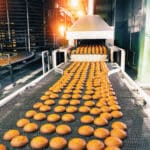Traditionally thought to be grown primarily in the Pacific Northwest (Oregon, Washington, and Idaho), U.S. hops production has taken on a strong presence in California as of late – and the craft brewing industry is reaping the rewards. But California hops production there isn’t as new as you’d think. Around 1850 the hop was a dominant crop from Sacramento, through the Sonoma Valley, to the Pacific Ocean. In fact, Golden State hops were prized from coast-to-coast and across the Atlantic in war-ravaged Europe from roughly 1915-1922. But by the 1950’s, the once thriving industry collapsed and the Sonoma hop farming soon disintegrated.
The Resurgence of California Hops Proving Fruitful for Craft Brewing Industry
The burgeoning $7.3 billion craft brew industry in California is greatly attributed to the flavorful flowers in the state. The change of landscape in where the hop is grown has affected the flavor infused in the craft beers. The result is that California has become a remarkable new resource for introducing new flavors to the market.
The “craft” in these craft brews are often honed in by small-scale hop farmers who have been reviving the California crop one experimental hop at a time. Hops, one of the main ingredients in beer, is the bitter character in the brew that shapes its unique character.
For example, IPAs (a hoppy style of beer within the pale ale category) often smell like flower, citrus, or pine. Craft brewers use different varieties of those, both fresh and dried, to achieve their distinct fruity or floral flavors that set their ales apart.
The latest trend growing in popularity is to make “wet hop beers” which use “farm-to-kettle” brewing techniques. While the result is a distinct hop profile, these are costly varieties to produce because the varieties need to be quickly delivered (within about eight hours) to retain maximum flavor.
The Bitters of Hops Doesn’t Diminish Future Outlook
The microclimates of hops make a large impact in terms of what varietals grow well. While one farmer has a successful hops yield, another farmer in the neighboring county’s yield may not fare well. Hops are greatly dependent on nutrient rich soil and plentiful water. The same hop grown in different soils with differing weather patterns, elevation, or topography will turn out diverse flavor profiles.
Lucky for craft brewers then that their primary goal is to grow unique hops, rather than trying for the same result and controlling it like a commodity.
There has been enthusiastic reception to the wet hop brews, proving that a strong market is seeking more variety and local products. What’s more, the potential for California’s advancement in the hops arena is helping spur on the craft beer industry to a new level of growth. Only time will tell just how much and how fast California hops will surge.
If you would like to learn more about partnerships and long-term contracts for craft brewing, our beverage advisory experts can assist your business while ensuring a sustainable food chain. K·Coe Isom’s food and beverage specialists are ingrained in California’s agribusinesses. Contact Christy Norton at Christy.norton@kcoe.com with questions, or for more information.









